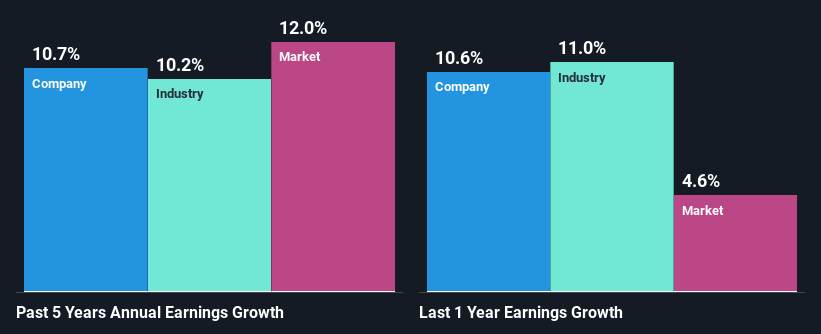Is Weakness In Automatic Data Processing, Inc. (NASDAQ:ADP) Stock A Sign That The Market Could be Wrong Given Its Strong Financial Prospects?
With its stock down 3.0% over the past month, it is easy to disregard Automatic Data Processing (NASDAQ:ADP). However, stock prices are usually driven by a company’s financial performance over the long term, which in this case looks quite promising. Specifically, we decided to study Automatic Data Processing's ROE in this article.
Return on equity or ROE is an important factor to be considered by a shareholder because it tells them how effectively their capital is being reinvested. In simpler terms, it measures the profitability of a company in relation to shareholder's equity.
We check all companies for important risks. See what we found for Automatic Data Processing in our free report.How Is ROE Calculated?
Return on equity can be calculated by using the formula:
Return on Equity = Net Profit (from continuing operations) ÷ Shareholders' Equity
So, based on the above formula, the ROE for Automatic Data Processing is:
77% = US$3.9b ÷ US$5.1b (Based on the trailing twelve months to December 2024).
The 'return' refers to a company's earnings over the last year. Another way to think of that is that for every $1 worth of equity, the company was able to earn $0.77 in profit.
View our latest analysis for Automatic Data Processing
What Is The Relationship Between ROE And Earnings Growth?
Thus far, we have learned that ROE measures how efficiently a company is generating its profits. Depending on how much of these profits the company reinvests or "retains", and how effectively it does so, we are then able to assess a company’s earnings growth potential. Assuming everything else remains unchanged, the higher the ROE and profit retention, the higher the growth rate of a company compared to companies that don't necessarily bear these characteristics.
Automatic Data Processing's Earnings Growth And 77% ROE
Firstly, we acknowledge that Automatic Data Processing has a significantly high ROE. Second, a comparison with the average ROE reported by the industry of 21% also doesn't go unnoticed by us. Probably as a result of this, Automatic Data Processing was able to see a decent net income growth of 11% over the last five years.
Next, on comparing Automatic Data Processing's net income growth with the industry, we found that the company's reported growth is similar to the industry average growth rate of 10% over the last few years.

Earnings growth is an important metric to consider when valuing a stock. What investors need to determine next is if the expected earnings growth, or the lack of it, is already built into the share price. This then helps them determine if the stock is placed for a bright or bleak future. Is Automatic Data Processing fairly valued compared to other companies? These 3 valuation measures might help you decide.
Is Automatic Data Processing Using Its Retained Earnings Effectively?
Automatic Data Processing has a significant three-year median payout ratio of 59%, meaning that it is left with only 41% to reinvest into its business. This implies that the company has been able to achieve decent earnings growth despite returning most of its profits to shareholders.
Additionally, Automatic Data Processing has paid dividends over a period of at least ten years which means that the company is pretty serious about sharing its profits with shareholders. Based on the latest analysts' estimates, we found that the company's future payout ratio over the next three years is expected to hold steady at 58%. Still, forecasts suggest that Automatic Data Processing's future ROE will drop to 61% even though the the company's payout ratio is not expected to change by much.
Conclusion
On the whole, we feel that Automatic Data Processing's performance has been quite good. Especially the high ROE, Which has contributed to the impressive growth seen in earnings. Despite the company reinvesting only a small portion of its profits, it still has managed to grow its earnings so that is appreciable. That being so, a study of the latest analyst forecasts show that the company is expected to see a slowdown in its future earnings growth. To know more about the company's future earnings growth forecasts take a look at this free report on analyst forecasts for the company to find out more.
Have feedback on this article? Concerned about the content? Get in touch with us directly. Alternatively, email editorial-team (at) simplywallst.com.
This article by Simply Wall St is general in nature. We provide commentary based on historical data and analyst forecasts only using an unbiased methodology and our articles are not intended to be financial advice. It does not constitute a recommendation to buy or sell any stock, and does not take account of your objectives, or your financial situation. We aim to bring you long-term focused analysis driven by fundamental data. Note that our analysis may not factor in the latest price-sensitive company announcements or qualitative material. Simply Wall St has no position in any stocks mentioned.
 Wall Street Journal
Wall Street Journal